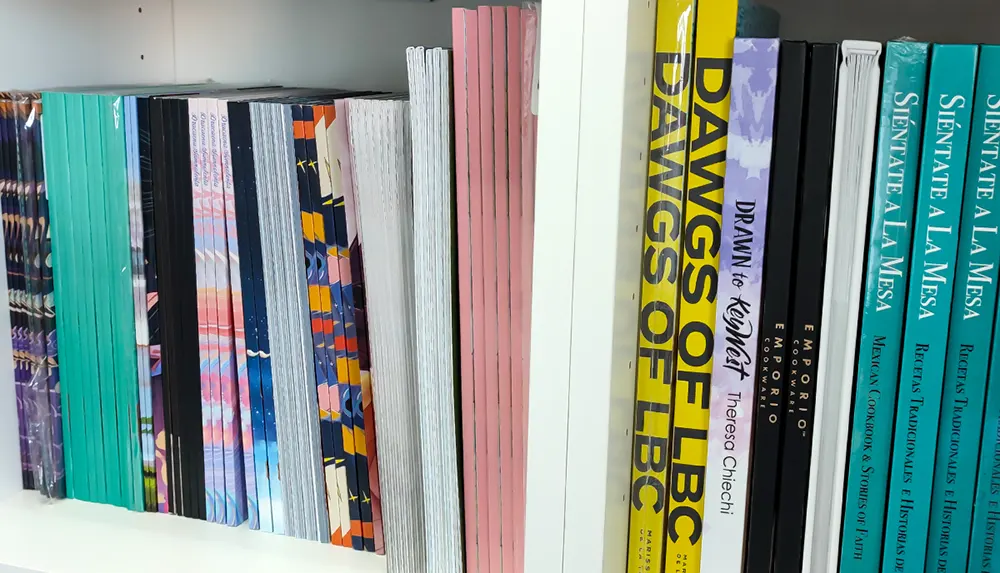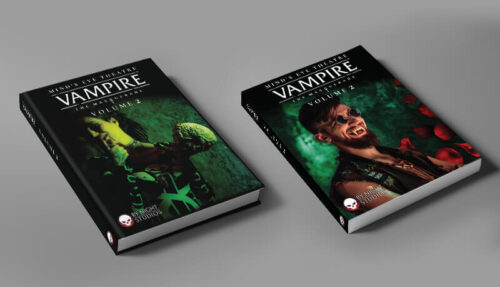When the self-publishing boom began, eBooks were the only option for independent authors; then followed affordable paperbacks; and now self-publishers are exploring the advantages that hardcovers offer.

In the world of books, there are two main types that readers come across: hardcover and paperback. These two formats have their own unique characteristics and appeal to different readers. While hardcover books are known for their durability and aesthetic appeal, paperback books are favored for their affordability and portability. In this post, we’ll delve into the differences between hardcover and paperback books, exploring their pros and cons, as well as the reasons people choose one over the other. Whether you are a book lover, a self-published author, or simply curious about the publishing industry, we draw on over 25 years in the international offset book printing sector to bring you helpful advice and valuable insights.
Understanding hardcover books
A hardcover book, also known as a hardback or hard case book, features a sturdy protective cover that is typically made of 2 mm to 3.5 mm cardboard or paperboard wrapped in printed paper to create a casing into which the pages are bound. It is designed to provide long-term protection for the book’s pages. Hardcover books often come with a dust jacket; a removable paper cover that adds an extra layer of protection and serves as a visual representation of the book’s content. The pages of a hardcover book are typically made of high-quality, durable paper that can withstand wear and tear.
Hardcover books are known for their superior print quality and aesthetic appeal. The cover design and artwork on hardcovers are often more intricate and visually appealing compared to paperbacks and may include special features such as embossed titles, metallic foil stamping on the author’s name, or UV spot coating to highlight part of the illustration. This makes hardcover books highly sought after by collectors and book enthusiasts who appreciate the beauty and craftsmanship of a well-designed book. Hardcover books are also commonly used for special editions, collector’s items, and reference guides.
The advantages and disadvantages of hardcover books
Like any other product, hardcover books have their own set of advantages and disadvantages. These may apply to the publisher (or self-publisher) or to the reader’s perspective. If you’re producing the book, you must take both aspects into account when deciding whether a hardcover edition is right for you. Let’s inspect the pros and cons of choosing a hardcover book:

Pros of hardcover books:
- Durability: Hardcover books are built to last. The sturdy cover and high-quality paper make them resistant to damage from regular use, making sure that they can withstand the test of time and will still look good on the bookshelves many years after purchase.
- Aesthetics: Hardcover books are visually appealing. The cover design, artwork, and dust jacket add a touch of elegance and sophistication, making them ideal for display on bookshelves or coffee tables and making them more likely to capture readers’ attention be it in a bricks-and-mortar bookstore or an online marketplace.
- Perceived value: Hardcover books are often associated with higher quality and prestige. They are considered more valuable and are often perceived as a mark of a well-established author or an important literary work. As a self-publisher, you can make a much higher return on investment for every copy sold than is possible with paperback editions.
- Ideal for gifting: The beauty and durability of hardcover books make them excellent gifts for special occasions. They are often chosen as presents for birthdays, anniversaries, or holidays, which opens up a potentially new area of the book market to successful self-publishers.
Cons of hardcover books:
- Higher cost: Hardcover books are more expensive than their paperback counterparts. The production costs, including the high-quality materials and printing process, contribute to the higher price tag.
- Heavy and bulky: Hardcover books are heavier and bulkier compared to paperbacks. This can make them less convenient to carry around or take on trips, especially if you want to read multiple books at once. It also increases the potential costs associated with storing and shipping them.
- Limited availability: Not all books are initially released in hardcover format. Some authors and publishers choose to release a book in paperback first, especially for new or lesser-known authors. From the publisher’s point of view, this can be a marketing bonus, as it creates a sense of scarcity which encourages fans to snap up these special editions while they still can.
Comparing hardcover with paperback books
Paperback books, also known as softcover books, have a flexible cover made of stiff but flexible cover paper or thin cardboard. The pages are usually glued together, and the entire book is lighter and more portable compared to hardcover books. Paperback books are often mass-produced, making them more affordable and accessible to a wider audience.
One of the chief advantages of paperback books is their affordability. They are cheaper than hardcovers, both to produce and to buy, making them a popular choice for avid readers who want to explore a wide range of books or pick up every installment in a series by a favorite author, without breaking the bank. Paperback books are also lightweight and easy to carry, making them ideal for travel or reading on the go. The flexibility of the cover allows for easier handling and comfortable reading, which is great for readers; and their smaller size and lighter weight make them easier to store and distribute, which is good for publishers.

The pros and cons of paperback books
Let’s examine the advantages and disadvantages of choosing a paperback book:
Pros of paperback books:
- Affordability: Paperback books are budget-friendly, making them accessible to a wider readership. They are a great option for readers who want to read more books without spending a significant amount of money.
- Portability: Paperback books are lightweight and take up less space compared to hardcovers. They are easy to carry in a bag or backpack, making them convenient for reading during commutes, travels, or any situation where portability is essential.
- Flexibility: The flexible cover of a paperback book allows for easier handling and comfortable reading. The pages can be easily folded, bookmarked, or bent without worrying too much about causing damage to a more prestigious item like a hardcover. For students and casual readers, people are often happy to scribble notes in the margins, dog-ear the corners to keep their place, and pass the books on to the thrift store once they’re finished with.
Cons of paperback books:
- Less durability: The relatively thin paper cover and lower-quality uncoated paper used in paperback books make them more susceptible to wear and tear. The pages may yellow or become brittle over time, especially with frequent use. And if they are only glued rather than sewn, then the pages may come loose after a few years.
- Less aesthetically appealing: Paperback books typically have simpler cover designs and artwork compared to hardcovers. While this may not affect the reading experience, some readers prefer the visual appeal of hardcover books.
- Not ideal for collectors: Paperback books are less likely to be collectible items compared to hardcovers. Collectors often seek hardcover editions for their value and rarity. And even if they’re not collectors, die-hard fans of a genre, author, or series, often love to get the hardcovers and special editions and may eschew the paperbacks as inferior products.
Factors to consider when choosing between hardcover and paperback
When deciding between a hardcover and a paperback book, several factors should be taken into consideration. It ultimately comes down to personal preferences, budget, and the specific needs of the reader. These are the same considerations that a publisher or self-publisher does well to consider, as successful publishers are always reader-focused. Here are some key factors to consider:

1. Purpose and intended use
Consider how readers plan to use the book. Do they want a durable book to keep for a long time, or are they looking for a more affordable option for casual reading? If they intend to display the book, such as on a bookshelf or coffee table, a hardcover may be more suitable because of its visual appeal.
2. Budget
Work out your budget and how much you will spend on designing, producing, storing, and distributing your book. Hardcover books are more expensive, while paperbacks offer a more budget-friendly option. If you are a successful self-publisher with an established base of avid readers or want to explore a wide range of books, opting for hardcovers and paperbacks can allow you to reward your current fans, reach a wider audience, and boost your profit margins.
3. Portability
If your readers are frequently on the go or enjoy reading during their daily commute to work or school, say, portability is an important factor to consider. Paperback books are lighter and more compact, making them easier to carry in bags or pockets. If your readers prefer to travel light or read in various locations, a paperback might be the better choice for them.
4. Collectability
If you print and publish special editions, coffee-table books, fine art or photographic books for a specialist market; readers who also collect books or enjoy owning limited or special editions, hardcover books may be more appealing. Limited editions, signed copies, or books with unique cover designs are often released in hardcover format. Collectors value hardcovers for their rarity, aesthetic appeal, and potential for appreciation in value.
5. Availability and marketing
Not all books are initially released in both hardcover and paperback formats. Some authors and publishers choose to release a book in one format first, followed by the other at a later date. Consider the availability of the book you want to offer to your readership and whether creating scarcity might be a smart marketing move.
The impact of publishing industry trends
The choice between hardcover and paperback books can also be influenced by industry trends and marketing strategies. Publishers often release new titles in hardcover format to target dedicated readers, collectors, and fans who will pay a premium for the latest release. After the initial release period, when sales stabilize, publishers may choose to release the book in paperback to appeal to a wider audience and increase sales volume. This is a traditional publishing strategy which increasing numbers of successful and savvy self-published authors with resources to invest in “upping their game” have more recently adopted and the initial results look promising.
The timeline for releasing a book in paperback after the initial hardcover release can vary. While some books may have a relatively quick turnaround time, with the paperback version available within a few months, others may take a year or longer to be released in paperback. In the end, it’s a judgment call based on your genre, your fans and followers, and your budget.

The rise of self-publishing and format choices
In recent years, self-publishing has gained popularity—in fact becoming ever more mainstream!—allowing authors to have more control over the publishing process, including the choice of book format. Self-published authors have the flexibility to choose between hardcover and paperback based on their target audience, budget, and personal preferences. While in the early days, eBooks and then lower quality print-on-demand books were the only options available to self-publishers, nowadays you have access to the same professional quality services used by the “Big Five” publishing houses.
For self-published authors, it is essential to consider the genre, target market, and production costs when deciding on the book format. As we’ve already mentioned, certain genres, such as coffee table books, textbooks, or reference guides, may lend themselves more to hardcover editions because of the need for durability and visual appeal. On the other hand, genres that cater to budget-conscious readers, such as romance or mystery novels, may be better suited for paperback editions. Why not have your cake and eat it, too?
The growing popularity of eBooks
In addition to hardcover and paperback formats, eBooks have become increasingly popular in recent years. eBooks offer a digital reading experience, allowing readers to access a vast library of books conveniently on their electronic devices. While eBooks may not have the tactile and visual appeal of physical books, they offer advantages such as portability, accessibility, and the ability to adjust font size and reading settings.
It is important to note that eBooks still do not sell more copies than physical books, such as hardcovers or paperbacks. Physical books still hold the lion’s share of the market, especially among dedicated readers and collectors. However, the rise of eBooks has provided readers with an additional format option and has opened up opportunities for self-published authors to reach a broader audience. Many readers will grab a cheap eBook edition and then, if they enjoy the book, go on to buy the paperback or hardcover edition for their bookshelves at home or to give as a gift to a friend or family member.
So, why do people buy hardcover books?
People buy hardcover books for prestige, aesthetic appreciation, to show their devotion to an author, character, or series—think of the rows and rows of hardcover editions of Harry Potter gracing the shelves of almost every home in America and the UK—as special gifts, and as collectible items. Your decision as a self-publisher as to whether you design and print a hardcover edition of your book depends on how closely your readership falls into one or more of these categories. In most cases, if you’re just starting out, you may be better off investing time in building a fanbase before you produce hardcovers. Equally, if you already have a successful series and a few thousand dedicated fans on your mailing list, then a hardcover is almost certainly a worthwhile investment. You can learn all the details you’ll need to know about printing a profitable hardcover book here.
Let's talk!
An exclusive, high-end hardcover book, whether designed and printed as part of a self-publishing strategy or as part of a business proposition, is a rewarding creative effort that may add significant value to your body of published work. Get in touch today to talk through your ideas or to ask us for a no-obligation quote. We can’t wait to help you make your custom self-published hardcover book the most beautiful ever!











